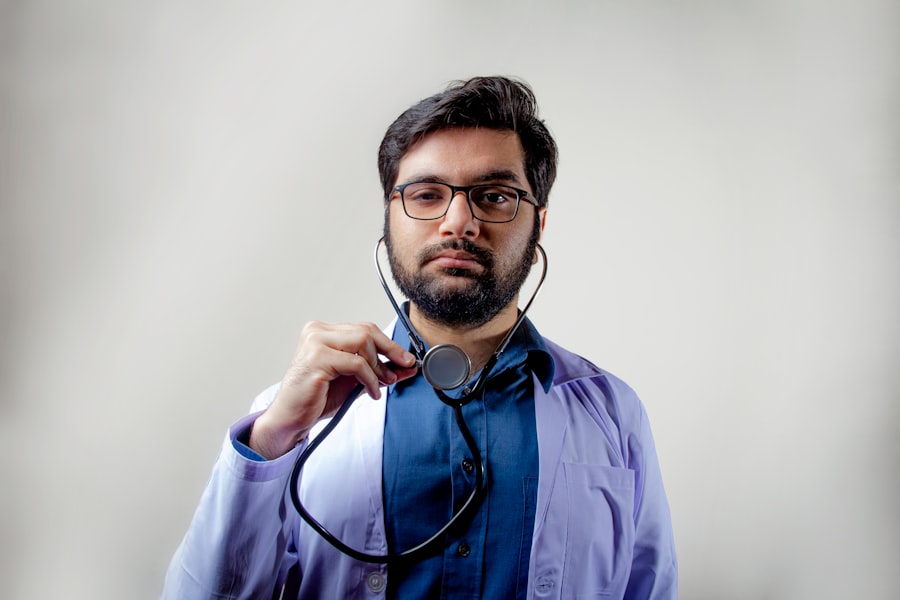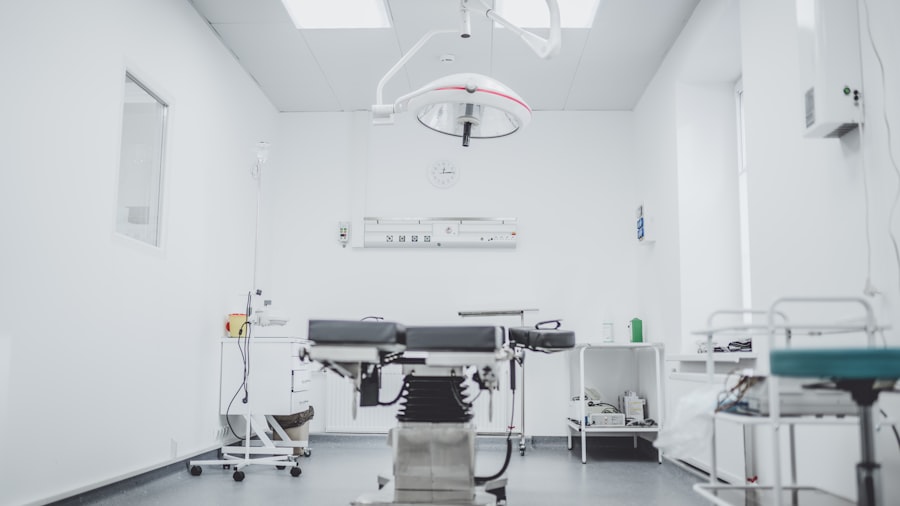The Norwegian healthcare system is renowned for its comprehensive and equitable approach to health services. Funded primarily through taxation, it ensures that all residents have access to necessary medical care without the burden of exorbitant costs. The system is structured around a universal model, which means that healthcare is available to everyone, regardless of their financial situation.
This model is designed to promote public health and well-being, ensuring that all citizens can receive timely medical attention when needed. In Norway, healthcare services are provided through a combination of public and private entities. The public sector plays a dominant role, with hospitals and clinics largely funded by the government.
This allows for a high standard of care, as facilities are equipped with modern technology and staffed by well-trained professionals. However, private healthcare options also exist, offering additional services and shorter waiting times for those who can afford them. Overall, the Norwegian healthcare system is characterised by its commitment to accessibility and quality, making it one of the most effective in the world. Book your 1-hour strategy session with Norway Relocation Group.
Summary
- The Norwegian healthcare system is primarily funded through taxes and provides universal coverage for all residents.
- Foreigners living or working in Norway for more than six months are eligible for the national healthcare scheme.
- Private health insurance options are available for foreigners who do not qualify for the national healthcare scheme or want additional coverage.
- Out-of-pocket costs for medical treatment in Norway are generally low, but can vary depending on the type of service and provider.
- Emergency medical care in Norway is accessible to everyone, regardless of their insurance status or nationality.
Eligibility for Healthcare Coverage in Norway
Eligibility for healthcare coverage in Norway is primarily determined by residency status. All citizens and residents who are registered in the National Population Register are entitled to access the public healthcare system. This includes Norwegian citizens, as well as foreign nationals who have obtained a residence permit or are living in Norway for an extended period.
It is essential for newcomers to register with the local authorities to ensure they receive their health insurance card, which grants them access to medical services. For those who are temporarily residing in Norway, such as students or expatriates, eligibility may vary. Students from EU/EEA countries may be entitled to the same healthcare benefits as Norwegian citizens if they can provide proof of their student status and health insurance coverage from their home country.
Conversely, non-EU/EEA nationals may need to secure private health insurance to cover their medical expenses while living in Norway. Understanding these eligibility criteria is crucial for anyone planning to reside in Norway, as it directly impacts their access to healthcare services.
Private Health Insurance Options for Foreigners

While the public healthcare system in Norway is robust, some foreigners may opt for private health insurance to supplement their coverage or to gain quicker access to certain services. Private health insurance can be particularly beneficial for expatriates who wish to avoid long waiting times for non-emergency procedures or those who prefer a wider range of treatment options. Various insurance providers offer tailored plans that cater specifically to the needs of foreigners living in Norway.
When considering private health insurance, it is essential to compare different policies and understand what each plan covers. Some plans may include additional benefits such as dental care, physiotherapy, or alternative treatments that are not typically covered by the public system. Additionally, many private insurers offer international coverage, which can be advantageous for those who travel frequently or plan to return to their home country for medical treatment.
Ultimately, choosing the right private health insurance can provide peace of mind and ensure that individuals receive timely and appropriate care.
Out-of-Pocket Costs for Medical Treatment in Norway
Despite the comprehensive nature of the Norwegian healthcare system, there are still out-of-pocket costs associated with medical treatment. While many services are covered by the public system, patients may be required to pay a co-payment for certain consultations, treatments, or medications. These costs can vary depending on the type of service received and whether the patient is accessing public or private healthcare facilities.
For instance, a visit to a general practitioner (GP) typically incurs a co-payment, while hospital stays and surgeries may involve additional fees. It is important for individuals to be aware of these potential costs when seeking medical care in Norway. Furthermore, prescription medications often come with a co-payment as well, although there are caps on how much individuals will pay annually for their medications.
Understanding these out-of-pocket expenses can help individuals budget effectively and avoid unexpected financial burdens.
Accessing Emergency Medical Care in Norway
Accessing emergency medical care in Norway is straightforward and prioritises patient safety and well-being. In case of an emergency, individuals can call the emergency services by dialling 113, which will dispatch an ambulance if necessary. Emergency rooms (ERs) are available at hospitals across the country and are equipped to handle a wide range of urgent medical situations.
It is important to note that emergency care is available to everyone, regardless of their residency status or insurance coverage. Upon arrival at an emergency room, patients will be triaged based on the severity of their condition. This means that those with life-threatening issues will be treated first, while less critical cases may experience longer wait times.
While emergency care is generally free for residents, non-residents may be charged for services rendered. Therefore, it is advisable for foreigners to have adequate health insurance or be prepared for potential costs associated with emergency treatment.
Payment Options for Non-Emergency Medical Services

When it comes to non-emergency medical services in Norway, patients have several payment options available to them. For those who are covered by the public healthcare system, most services will be billed directly to the government, meaning that patients will only need to pay any applicable co-payments at the time of service. This system simplifies the payment process and ensures that individuals do not face significant financial barriers when seeking necessary care.
For those opting for private healthcare services, payment methods may vary depending on the provider. Many private clinics accept credit cards and bank transfers, making it convenient for patients to settle their bills promptly. Additionally, some private insurers may offer direct billing arrangements with certain providers, allowing patients to receive treatment without having to pay upfront.
Understanding these payment options can help individuals navigate their healthcare experience more smoothly and ensure they receive timely care without unnecessary financial stress.
Understanding the Norwegian Patient Co-Payment System
The Norwegian patient co-payment system is designed to share the cost of healthcare between the government and patients while ensuring that essential services remain accessible. Under this system, patients are required to pay a portion of the costs associated with certain medical services, such as consultations with specialists or outpatient treatments. The co-payment amounts are regulated by the government and are subject to annual limits.
Each year, there is a cap on how much an individual will pay out-of-pocket for healthcare services before reaching what is known as the “frikort” threshold. Once this threshold is reached, patients are exempt from further co-payments for the remainder of the year. This system aims to protect individuals from excessive medical expenses while encouraging responsible use of healthcare resources.
Understanding how this co-payment system works can help patients plan their healthcare needs more effectively and manage their expenses throughout the year.
Reimbursement Procedures for Foreigners
Foreigners residing in Norway may find themselves needing to navigate reimbursement procedures for medical expenses incurred during their stay. If a foreign national has private health insurance that covers treatment received in Norway, they should first check with their insurer regarding the specific reimbursement process. Typically, this involves submitting invoices and receipts from medical providers along with any required documentation.
For those who have incurred out-of-pocket expenses while accessing public healthcare services, reimbursement may be more complex. Non-residents may not be eligible for reimbursement from the Norwegian government; however, if they have private insurance that covers such costs, they should follow their insurer’s guidelines for submitting claims. It is advisable for foreigners to keep detailed records of all medical treatments received and associated costs to facilitate any reimbursement claims.
Financial Assistance Programs for Medical Treatment in Norway
Norway offers various financial assistance programs aimed at supporting individuals who may struggle with medical expenses due to low income or other circumstances. These programs are designed to ensure that all residents have access to necessary healthcare without facing undue financial hardship. For instance, individuals who qualify based on income may receive subsidies or reduced co-payments for certain medical services.
Additionally, there are specific programs aimed at supporting vulnerable populations such as children or those with chronic illnesses. These initiatives often provide additional resources or funding for treatments that may not be fully covered by standard health insurance plans. Understanding these financial assistance options can empower individuals facing medical expenses in Norway and help them access the care they need without overwhelming financial strain.
Tips for Managing Medical Expenses in Norway
Managing medical expenses in Norway requires careful planning and awareness of available resources. One effective strategy is to familiarise oneself with the Norwegian healthcare system and understand what services are covered under public health insurance versus private plans. This knowledge can help individuals make informed decisions about where to seek care and how much they might expect to pay out-of-pocket.
Another useful tip is to keep track of all medical appointments and associated costs throughout the year. By maintaining detailed records, individuals can better understand their healthcare spending and ensure they do not exceed co-payment limits unexpectedly. Additionally, exploring financial assistance programs or speaking with healthcare providers about payment plans can provide further support in managing medical expenses effectively.
Navigating the Norwegian Healthcare System as a Foreigner
Navigating the Norwegian healthcare system as a foreigner can initially seem daunting; however, understanding its structure and processes can significantly ease this transition. It is crucial for newcomers to familiarise themselves with eligibility requirements and register with local authorities promptly upon arrival in Norway. This step ensures access to necessary healthcare services and helps avoid potential complications later on.
Moreover, seeking guidance from local expat communities or online forums can provide valuable insights into navigating the system effectively. Many foreigners have shared their experiences regarding accessing healthcare services in Norway, which can offer practical tips and advice on what to expect during appointments or how to handle specific situations related to medical care. Additionally, enrolling in Norwegian language courses at institutions like NLS Norwegian Language School can enhance communication skills and facilitate interactions with healthcare professionals—making it easier to navigate appointments and understand medical information clearly.
In conclusion, while navigating the Norwegian healthcare system as a foreigner may present challenges initially, understanding its structure and available resources can significantly ease this process. With comprehensive public coverage complemented by private options and various financial assistance programs available, individuals can access quality care tailored to their needs while managing expenses effectively.
Speak Norwegian with confidence. Enroll in a class at the NLS Norwegian Language School now.

